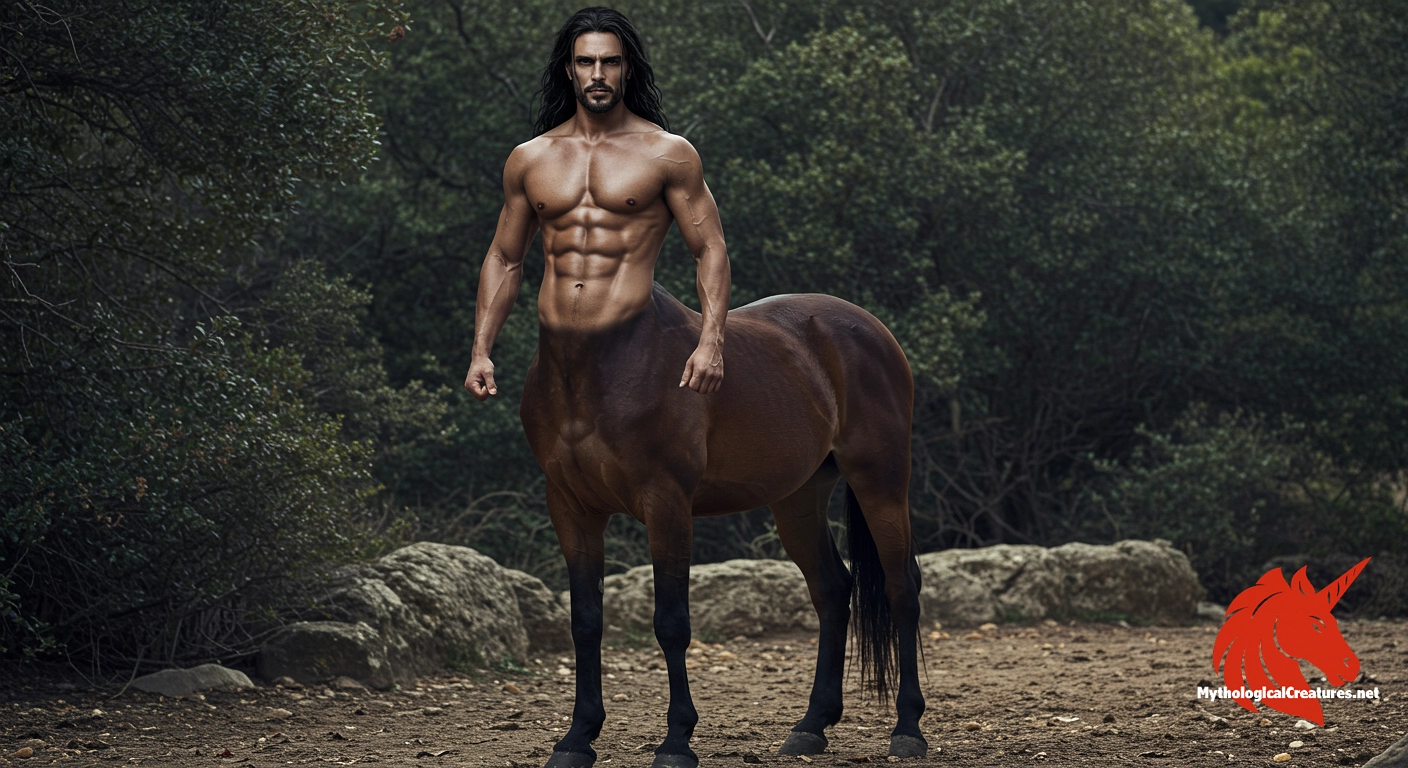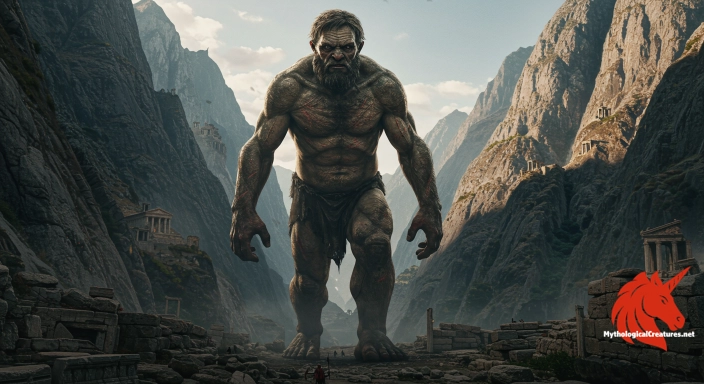Melanchaetes: Melanchaetes is a centaur from Greek mythology known for his reckless attempt to steal the wine of Pholus.

Melanchaetes
Melanchaetes - Represents the untamed and destructive aspects of centaur nature, serving as a cautionary figure about hubris and unruly behavior.
Origins & First Encounters
Melanchaetes emerges from the rich tapestry of Greek mythology as a centaur whose very name, meaning 'black-haired', hints at a unique identity amidst his kind. He is depicted as one of the wild figures inhabiting the fringes of human civilisation, where the forces of nature and untamed instincts were personified. His origins lie within a legendary world where centaurs epitomised the duality of reason and brute force, blending human intelligence with animalistic impulses. First attested in the narrative surrounding the theft of Pholus’s prized wine, his brief yet dramatic role is intertwined with the heroic exploits of Heracles. The myth speaks of not only physical conflict but also the symbolic strife between order and chaos. In ancient cultural contexts, figures like him served as metaphors for nature’s unpredictability and the constant struggle between civilized restraint and raw, primal energy. His actions, rooted in a moment of impulsivity, reflect the typical centaur motif of transgression and downfall. Ultimately, Melanchaetes stands as a reminder of the ever-present tension between human sophistication and the wild forces that lie beyond its borders.
Source Texts & Tale Variants
The primary sources that mention Melanchaetes are sparse and fragmentary, yet his name survives in the enduring oral and written traditions of ancient Greece. His mention is primarily found in texts that detail the exploits of centaurs and their conflicts with legendary heroes such as Heracles. Some classical compilations and mythographical collections, including those later attributed to Pseudo-Apollodorus, offer glimpses into the tumultuous events surrounding Pholus and his kin. In these narratives, Melanchaetes is recalled as one of the centaurs whose greed led to fatal encounters, a theme recurrent in the mythic tradition. Variants of the story sometimes merge his identity with the collective behaviour of centaurs, underlining their inherent wildness and propensity for mischief. Artistic depictions on ancient pottery and in mosaics also echo his brief but potent presence alongside other centaur figures in the dramatic struggles of myth. The fragmented sources underscore the challenges of reconstructing his complete tale, as different authors and regions emphasised varying aspects of centaur lore. Despite the limited textual evidence, the enduring nature of his story highlights the power of these myths to capture the imagination across generations.
Form & Powers
While detailed descriptions of Melanchaetes are few, classical representations of centaurs provide a valuable framework for imagining his appearance. His epithet 'black-haired' suggests that his human upper body was adorned with dark, flowing locks that set him apart from his lighter-haired counterparts. Like other centaurs, he likely possessed the robust, muscular torso of a man fused seamlessly with the powerful and graceful body of a stallion. Ancient artists frequently depicted centaurs with a rugged, somewhat unkempt appearance, a portrayal that would suit Melanchaetes’s impulsive nature. His facial features are imagined to combine stern determination with a hint of savagery, capturing the dual aspects of intellect and primal instinct. The horse half of his form would have been rendered with sleek, strong lines that symbolised both speed and untamed strength. This imagery of human-horse hybridity was meant to evoke admiration as well as caution among audiences. Variations in size and build among centaurs might have afforded him a slightly leaner or more muscular frame depending on the particular artistic or literary source. Overall, his physicality remains emblematic of the liminal state between human civilisation and the wild, natural world.
Regional Faces
Within the Greek world, interpretations of centaur figures like Melanchaetes varied significantly from one region to another. In some parts of Greece, notably in the peripheral areas where the wild landscapes still exerted a strong influence on local culture, centaurs were revered as dangerous denizens of the untamed wilderness. In these local traditions, Melanchaetes’s act of stealing wine was seen not merely as a criminal act but as a symbolic transgression against the boundaries of civilization. In regions where Heracles was particularly venerated, his conflict with centaurs acquired additional layers of religious and moral significance, underscoring a broader narrative of cosmic order triumphing over chaos. Certain local myths imbued centaurs with a dual role, sometimes as bringers of wisdom and other times as embodiments of irrational excess, a duality that Melanchaetes subtly reflects. The artistic motifs adopted in different Greek city-states also influenced the portrayal of centaurs, with some depictions highlighting their beastly features while others underscored a tragic nobility. Slight variances in narrative emphasis allowed Melanchaetes to be adapted into regional myth cycles, aligning his story with local values and natural settings. Even in later periods, as Greek influence spread, the character of this centaur was assimilated into a tapestry of local legends, each adding its own nuance to his mythic persona.
Cultural Parallels
Melanchaetes offers a fascinating lens through which to view cross-cultural themes of hybridity and the confrontation between the civilised realm and the wild. His portrayal as a centaur who succumbs to impulsive behaviour finds strong parallels in other mythologies which feature beings that straddle the boundary between human intellect and animalistic instinct. In many Western traditions, similar creatures like the satyrs also embody a mix of refinement and savagery, serving both as comic relief and as cautionary symbols of excess. Beyond the Greek world, hybrid beings in various cultures often illustrate the struggle to integrate the rational with the untamed, a theme echoed in narratives featuring werewolves or other shape-shifters in later European folklore. Indian and Middle Eastern mythologies, albeit with different symbolic frameworks, also engage with the notion of partial transformation where divine elements mingle with the more visceral aspects of nature. The story of Melanchaetes, therefore, resonates across borders as it encapsulates the universal archetype of the liminal creature whose existence challenges the binary between order and chaos. This convergence of mythic themes underscores a broader human fascination with the idea that the boundaries of existence are rarely fixed. In comparative analyses, such figures serve as rich symbols for exploring the contradictions inherent in human nature. As with many mythic beings, Melanchaetes invites us to consider the potential for both enlightenment and ruin that lies within the interplay of opposites.
Legacy & Modern Evolution
The evolution of Melanchaetes from a minor mythological character to a subject of modern symbolic interpretation illustrates the lasting impact of ancient narratives. Though his role in myth was brief, the episode of his transgression and subsequent death at the hands of Heracles has resonated across centuries as a poignant allegory of recklessness and the dangers of unbridled desire. Early classical art often depicted centaurs in dynamic scenes of conflict, and while Melanchaetes per se may not have been a focal point, the themes embodied in his story permeated the artistic and literary traditions of the era. During the Renaissance, the motif of centaurs experienced a revival as myth and allegory merged to reflect contemporary concerns about morality and the natural world. In modern times, the figure of the centaur has been reimagined in literature, film, and visual arts, often representing the struggle between rationality and wild instinct. Even as more prominent figures like Chiron have gained broader recognition, the narrative of Melanchaetes continues to offer a subtle reminder of the perils inherent in overstepping natural limits. His legacy is a testament to the enduring power of myth to encapsulate complex human emotions and societal dilemmas. Contemporary reinterpretations often cast him as a symbol of the eternal conflict between discipline and impulsiveness, challenging modern audiences to reflect on the balance between order and natural chaos. This ongoing dialogue with the past ensures that even lesser-known mythic characters retain their relevance in cultural discussions and artistic explorations.
Interesting Fact
His name, meaning 'black-haired,' is one of the few personal details preserved in ancient texts, emphasising how even minor mythological figures can possess distinctive characteristics that capture the imagination.
Quick Creature Info
Origin:
Features:
Associations:
Our Mythic Legendary Rating:

Habitat:
Supernatural Powers:
Physical Attributes:
Abilities:
Behavior:
Lore:
References
Discover Another Mythical Legend You May Not Have Heard Of?
Uncover the mysteries of ancient folklore and expand your knowledge of legendary beings from cultures around the world.
Dare to Meet the Picolous....
Curated by the Mythological Creatures Team (rev. May 2025)
